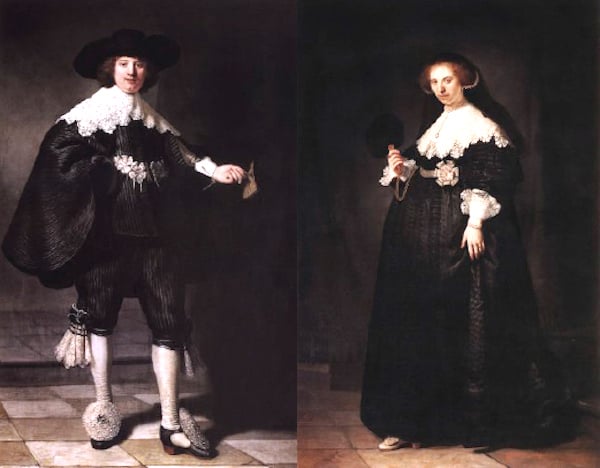
Photo via: La Tribune de l’Ar
The portraits of Maerten Soolmans and Oopjen Coppit, a young and successful couple that Rembrandt van Rijn painted just before their wedding in 1634, might hit the market very soon, El País reports (see 70 New Rembrandt Paintings Discovered).
The sale could be a sensational event, as the paintings have been in France since 1877, when they were bought by Baron Gustave de Rothschild, and have rarely been displayed in public since.
The current owner, Eric de Rothschild, has obtained an export permit, granted by the French Ministry of Culture and the Louvre Museum, and according to the French publication La Tribune de l’Art, has put a €150 million price tag on the paintings in the documents (see $50 Million Rembrandt Selfie Authenticated).
Failure to Declare the Paintings as National Heritage
Despite being part of a private collection, LTA harshly criticizes both the Ministry of Culture and the Louvre for failing to declare the portraits as National Heritage—a move that would effectively delay the sale of the paintings, which would thus be prevented from exiting the country for at least 30 months (see X-Ray Analysis Reveals Joshua Reynolds Repainted Rembrandt Masterpiece).
LTA doesn’t mince words when it comes to Eric de Rothschild either, whom it accuses of betraying the Rothschilds’ long-standing art patronage spirit:
“Not so long ago, the Rothschilds were great patrons of the French museums. […] He should have honored his name, approached the Ministry and the [Louvre], and agreed with them on a reasonable amount without seeking to obtain the highest price […] Eric de Rothschild is a member of the Société des Amis du Louvre (Society of Friends of the Louvre). Some friend!”
French Museums Strapped for Funds
Meanwhile, the Louvre Museum and the French Ministry of Culture have already responded to criticisms by declaring that they could not have secured the necessary resources to fund the acquisition of the paintings in just 30 months, insiders sources told LTA.
This comes as no surprise, as cash-strapped French museums have recently had to turn to inventive methods, such as crowdfunding, to tackle acquisitions in a climate of slashed budgets (see Can Crowdfunding Save French Museums? and Musée Rodin Turns to Crowd-Funding for Acquisition).
Will the Rothschilds Sell?
Still, despite the full-blown controversy, the purported sale of the masterpieces is still within the realm of speculation. According to El País, the Rothschild family has admitted requesting the export certificate, but has not given any details as to what are they planning to do with the paintings next.
Finding suitable candidates to acquire them won’t be a problem. “If [the paintings] reach the market, it will be very interesting; [Rembrandt] painted very few full-length portraits,” Gregor Weber, from the Rijksmuseum, told El País.